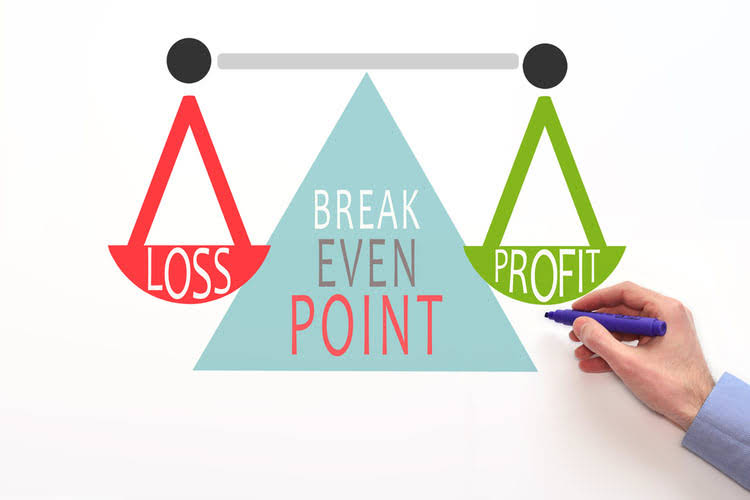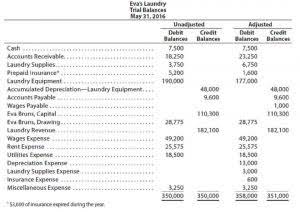
The nonaccrual experience method means that you can deduct income from your business gross income for the purpose of a tax return in the case you were unable to collect a bad debt. Normally, bad debts are deducted in part or in full from a business’ gross income while determining its tax income. Bad debts can be claimed by using either the specific charge-off method or the non-accrual experience method.
What is the cost of Catch-up Bookkeeping Services?
In addition, the expected reduction in commercial landings is expected to initially increase the average ex-vessel price of gag from $6.10 per lb to $7.78 per lb in 2024, and then gradually decrease to $6.96 per lb in 2028. This increase https://www.bookstime.com/ in the ex-vessel price is expected to partially offset the adverse effects of the expected landings reduction. Thus, the expected reduction in ex-vessel revenue for gag on average is approximately $1.57 million per year.
Understanding Catch-Up Bookkeeping
58 percent of business owners working 60 or more hours a week said that bookkeeping was particularly draining. As a small business owner, you’re likely wearing many hats—juggling everything from product sourcing to inventory management, front-end work, human resources, marketing, and more. If you paid an independent contractor more than $600 over the course of a year, then you’ll need to issue them a 1099-NEC. First, you’re attempting to find paperwork to document your business transactions.
Regain Financial Control with Catch-up Bookkeeping Handbook
Are you being haunted by a pile of receipts or unreconciled bank statements? Get in touch today to learn more about the benefits of accurate accounts data for your business. Catch-up accounting is a process of going over an organization’s historical bookkeeping, accounting, and money practices over a period of time and bringing them into compliance.
- Based on this information, all commercial fishing businesses regulated by this final rule are determined to be small entities for the purpose of this analysis.
- All of the catch levels recommended by the Council in Amendment 56 were rounded down to the nearest thousand pounds.
- Hopefully, most American businesses recognize how the world works and based on the massive corporate investment in sustainability reporting, the impact of the SEC delaying climate reporting may not be substantial.
- Financial data mismanagement can mean catastrophe for the future of a business.
- This final rule is only expected to affect economic profits from the ownership of gag shares.
- Whether it’s balance sheets, income statements, or cash flow statements, these reports offer valuable insights into your business’s financial health with just a few clicks.
Accounting Software for Financial Reporting
Thus, NMFS expects the reduction in economic profits to be around 1 percent on average per commercial fishing business as a result of the action to change the sector allocation, implement a rebuilding plan, and change the stock ACL. NMFS does not expect a 1 percent reduction in economic profits to cause an economic hardship for the average commercial fishing business that possesses quota shares for gag. However, average annual commercial landings of gag from 2017 through 2021 were only 492,401 lb (223,349 kg), noticeably below the commercial quota. Initially, NMFS expects the reduction in commercial landings to increase the average ex-vessel price of gag from $6.10 per lb to $7.78 per lb, or by $1.68 per lb, in 2024. However, NMFS expects the increase in ex-vessel price to gradually decrease through 2028 as the quota and landings increase, resulting in an ex-vessel price of $6.96 in 2028.
Ways to Attract Millennials to your Accounting Firm

Gag is vulnerable to red tide events and was negatively affected by these disturbances in 2005, 2014, 2018, and projected for 2021. Modeling changes were also made in SEDAR 72 to improve size estimates of gag retained by commercial and for-hire (charter vessels and headboats) fishermen, and private anglers. The most recent stock assessment for gag was completed in 2021 through Southeast Data, Assessment, and Review 72 (SEDAR 72), and concluded that the gag stock is overfished and is undergoing overfishing as of 2019. SEDAR 72 also used updated recreational catch and effort data from the Marine Recreational Information Program (MRIP) Access Point Angler Intercept Survey and Fishing Effort Survey (FES) through 2019. Prior to SEDAR 72, the most recent stock assessment for gag was SEDAR 33 Update (2016), which indicated that gag was not subject to overfishing and was not overfished. The SEDAR 33 Update used recreational catch and effort data generated by the MRIP Coastal Household Telephone Survey (CHTS).

Audits provide assurance that financial statements reflect the true financial position of the business and comply with regulatory requirements. Updating financial statements is a critical aspect of catch up bookkeeping, as it provides a business’s financial state outlook. Catch up bookkeeping allows businesses and individuals to accurately report income, claim deductions, and fulfill tax obligations on time. Besides, it facilitates tax planning strategies, such as identifying deductible expenses or maximizing tax credits, to optimize tax liabilities. Timely and accurate financial information is crucial for effective decision-making within businesses.

- As with the second alternative, the fifth alternative would have also established a rebuilding plan of 11 years assuming a fishing mortality rate of zero and used SEDAR 72 SRFS Run projections to change the OFL.
- Catch up bookkeeping allows businesses to address any discrepancies or irregularities identified during the review process and ensure the integrity of their financial reporting.
- In the worst-case scenario, your outdated books can leave you in the dark when it comes to your cash flow, jeopardizing your ability to cover expenses, payroll, and more.
- These assessments require businesses to demonstrate transparency, accuracy, and compliance with accounting standards.
Knowledgeable and skilled staff are essential for maintaining accurate financial records. Schedule regular reviews of financial records to identify any discrepancies or anomalies promptly. Set up automated alerts and notifications within your accounting software to flag potential issues or irregularities. Organizing critical tasks based on urgency and impact can help you manage financial records more efficiently.
- Say you made a $1000 sale in October 2020, but you weren’t paid until February 2021.
- Catch-up bookkeeping refers to the process of organizing and recording all financial transactions that have been neglected or overlooked.
- NMFS will use the best data available to project the duration of the recreational season in 2024 and in following years.
- Communicating with multiple sectors at any job can be overwhelming and, as a result, cause stress.
- By delegating tasks and freeing up time for yourself, you will be able to focus on your goals, the big picture, the firm’s processes, and the business’ direction.
Utilize accounting software
Gain practical tips and strategies tailored for business owners to streamline processes. If you need to separate your business and personal catch up bookkeeping expenses, the sooner you do it, the better. Learn how to open a small business bank account and keep your finances separate.






